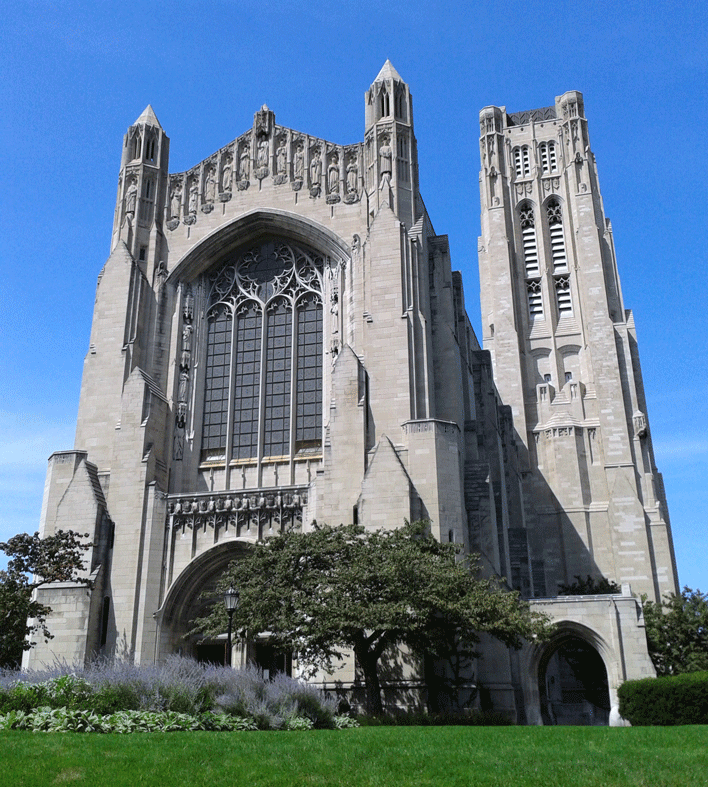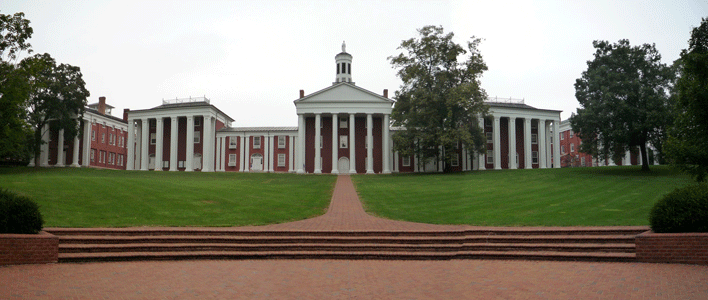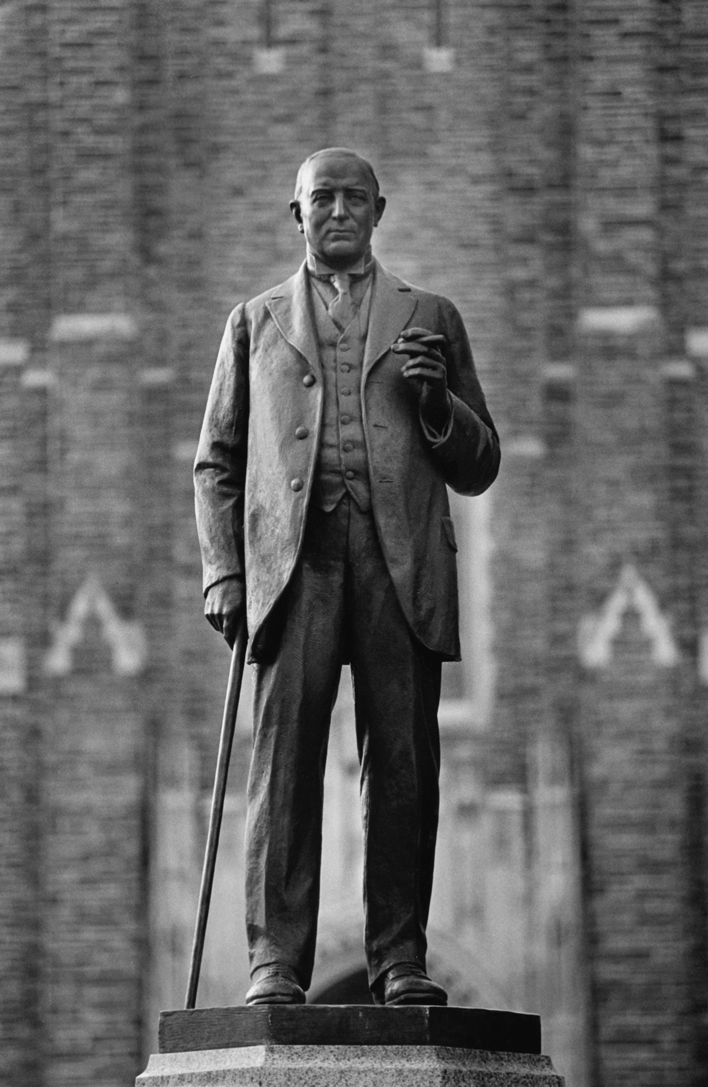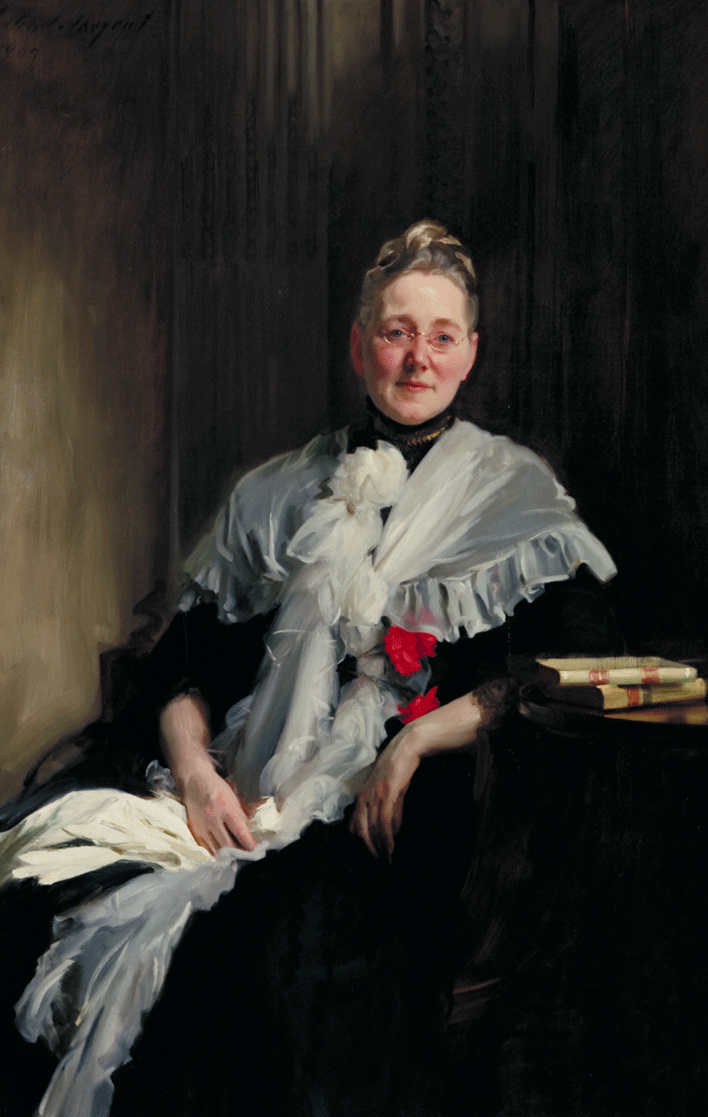From Philanthropy, Winter 2013, “American History’s Great Philanthropists”
John D. Rockefeller
The sum total of John D. Rockefeller’s post-secondary education consisted of a 10-week course at E. G. Folsom’s Business College. For $40, the 15-year-old boy took introductory classes on double-entry bookkeeping, basic commercial law, and the principles of finance. Equipped with that knowledge, Rockefeller went on to become, by many measures, the richest man in human history. And with that wealth, the graduate of a for-profit degree mill soon became one of America’s greatest patrons of colleges and universities.

Rockefeller Memorial Chapel at the University of Chicago.
Rockefeller’s interests in higher education ranged widely, but he is remembered for three achievements. One of his earliest philanthropic interests was higher education for African Americans. In 1882, he began a series of gifts to the Atlanta Baptist Female Seminary, a struggling school for African-American women. As Rockefeller gradually rebuilt the campus, the school decided to take the maiden name of Rockefeller’s wife: Spelman. Similar gifts were soon directed to two other black colleges—the Tuskegee Institute and Morehouse College.
Rockefeller was likewise an early champion of supporting higher education in order to advance medical research. In 1901, he founded the Rockefeller Medical Research Institute in New York City. Modeled on the Institut Pasteur in France and the Robert Koch Institute in Germany, it was the country’s first biomedical institute, soon on a par with its European models. The results were dramatic. Within a decade, it created a vaccine for meningitis and had supported the work of America’s first winner of a Nobel Prize in medicine. Today, known as Rockefeller University, it is one of the leading biomedical research centers in the world. Dozens of Nobel Prize winners have served on its faculty.
But Rockefeller is perhaps best remembered for what was a project of lifelong interest to him: the creation of the nation’s preeminent Baptist university. Rockefeller considered several options before pairing with William Rainey Harper to establish the University of Chicago. In 1889, he made his first contribution—for $600,000—to the school. Over the rest of his life, he would give it a total of $35 million, making it possible for the upstart school to instantly rank among the world’s leading institutions of higher learning. Rockefeller insisted that his name not be used anywhere on campus, even rejecting an image of a lamp on the university seal, lest it be taken as a suggestion of the influence of Standard Oil. Even though the school quickly lost much of its Baptist identity, Rockefeller would later say that founding the University of Chicago was “the best investment I ever made.”
George Washington
In 1796, three years before he died, Washington offered a gift to the Augusta Academy of Lexington, Virginia: 100 shares of the James River and Kanawha Canal Company, worth at the time approximately $20,000. It was then the largest contribution to higher education in American history. Grateful for the gift, the school’s trustees immediately renamed the college Washington Academy; today it is known as Washington and Lee University. The contribution, according to Prof. Taylor Sanders of Washington and Lee, was roughly the equivalent of $20 million today. By one estimate, a little more than $11 of every current student’s tuition is underwritten by the generosity of George Washington.

Washington and Lee University
Peter Cooper
Peter Cooper was the great inventor of the early republic, a sort of early 19th-century-Edison. In 1853, he launched a revolutionary experiment in higher education: the Cooper Union. Cooper intended for his school to provide a practical education, free of charge, offering many of its classes at night so that working men could fully avail themselves of the school. When the Cooper Union first opened its doors in 1859, more than 2,000 people applied. Its reading room was open to the public and, unlike New York City’s other libraries at that time, was open until 10:00 p.m., again so that working people could use it. As many as 3,000 people took advantage of the reading room every week. Thanks to its founder’s generosity, Cooper Union—one of the premier engineering schools in the country—remains to this day tuition-free.
Leland Stanford
Leland Stanford was a railroadman when the railroads meant ruthless politics and red-clawed capitalism. But the hardest thing this hard man ever faced was the death of his only child, Leland Stanford Jr., at the age of 15. To honor their son’s memory, Stanford and his wife decided to found a private, co-educational, non-sectarian, and tuition-free university. It was intended to broaden the geography of American higher education, bringing a great university to the shores of the Pacific. The Stanfords were intimately involved in virtually all aspects of the university’s planning, personally funding the entire operations of the university during its early years. “Perhaps the greatest sum ever given by an individual for any purpose is the gift of Senator Stanford,” wrote Andrew Carnegie in 1889. Impressed by Stanford’s philanthropy, Carnegie simply concluded: “He is to be envied.”
James B. Duke
James Buchanan Duke built two massive fortunes—one in tobacco and the other in hydroelectric generation—which he dedicated to hospitals, rural Methodist churches, orphan care, and four specific colleges. Foremost among his beneficiaries was Trinity College, which Duke had designated to receive the gifts that would transform it into Duke University, a memorial to his father and brother. He intended that Duke University attain “a place of real leadership in the educational world.” In the years before his death in 1925, he took great pleasure in the design of Duke’s Gothic campus. “Don’t disturb me now; I am laying out the university grounds,” he said to his nurse days before he died. “I am looking to the future, how they will stand and appear a hundred years from now.”

Edward Harkness
A deep concern for collegiality informed Edward (“Ned”) Harkness’ extensive giving to higher education. The only surviving heir of Standard Oil’s first major investor was a lifelong philanthropist who took a special interest in elite schools. Beneficiaries of his generosity included (among many others) Harvard, Yale, Brown, and Columbia. At the turn of the 20th century, Harkness saw American universities adopting the model of the large German research institutions. He came to fear that students would miss the refined sociability of collegiate life. His preferred solution was to promote the British model, in which a university was divided into smaller residential houses where students would live, dine, study, and gather. First at Harvard, then at Yale (and elsewhere), Harkness funded the construction of residential colleges, which remain an integral part of campus life.
George Eastman
The founder of Eastman Kodak was a prolific funder of higher education. A native of upstate New York, he settled in Rochester, and his $51 million in gifts made the University of Rochester into a top-tier school. In addition, Eastman gave hefty sums, without solicitation, to black colleges like Tuskegee, Hampton, Howard, and Meharry. (Between his college and lower-school gifts, George Eastman was one of the very largest donors to African-American schooling of the early 20th century). But he is perhaps best remembered for his pseudonymous support—some $20 million in all—of the Massachusetts Institute of Technology. It was Eastman, more than any other individual, who made possible MIT’s transformation from commuter school to international powerhouse.
Mary Elizabeth Garrett
Mary Elizabeth Garrett was the third child (and only daughter) of railroad tycoon John Garrett, the president of the Baltimore & Ohio Railroad. Her father’s favorite, Mary often accompanied him on business trips, recording his correspondence and meeting some of the era’s most powerful businessmen. But John also taught his daughter philanthropy. He was an intimate of George Peabody, and he maintained close ties with Johns Hopkins, serving as a trustee of both Hopkins’ university and hospital.

Upon her father’s death in 1884, Mary inherited nearly $2 million. Within a few years, she embraced the cause of opening Johns Hopkins University to women. In 1887 she offered the university $35,000 to establish a co-educational school of science, but the university president and trustees rejected her proposal. A few years later, however, Johns Hopkins found itself on unsure financial footing. The opening of the medical school had been delayed due to insufficient funds. Garrett spotted her opportunity.
Garrett enlisted her friends and sought support from other influential women around the country (including Mrs. J. Pierpont Morgan, Mrs. Leland Stanford, and First Lady Mrs. Benjamin Harrison) to raise funds and approach the university with a new proposal. She offered the trustees $100,000 (half of which she contributed personally) to pay for the opening of the medical school on one condition: that men and women would be admitted on equal standing. The board agreed in principle to admitting women, but told the group that the school could not open with less than $500,000.
When the university and the newly formed Women’s Medical Fund Committee struggled to approach this number, Garrett stepped in and covered the difference with $307,000. But her additional funding came with additional conditions. She demanded that the medical school be a graduate-level program for advanced medical studies, requiring a bachelor of science for admission. Both stipulations were unprecedented.
Garrett’s funds not only opened medical education to America’s women, which would be accomplishment enough. They also turned Johns Hopkins into the first modern medical school in the United States. In his history of the school, Alan Chesney concludes: “To this lady, more than any other single person, save only Johns Hopkins himself, does the School of Medicine owe its being.”
For her bargain with the Johns Hopkins medical school, Garrett is sometimes called America’s greatest “coercive philanthropist.” William Osler, one of the school’s four founding physicians, famously quipped: “It was a pleasure to be bought.”
